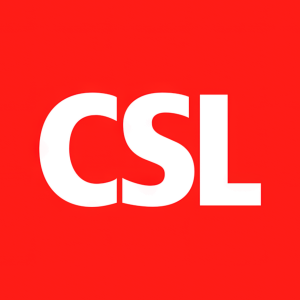New Real-World Data Presented at OPTIONS XI Show Cell-Based and MF59®-Adjuvanted Influenza Vaccines Can Reduce the Burden of Seasonal Influenza on Hospitals and Health Systems
Rhea-AI Summary
CSL Seqirus announced findings from four real-world studies presented at OPTIONS XI, demonstrating the effectiveness of cell-based and adjuvanted influenza vaccines in reducing influenza-related hospitalizations and costs. Notably, data showed that the MF59-adjuvanted FLUAD vaccine decreased hospitalizations in adults aged 65 and older, while the FLUCELVAX QUADRIVALENT vaccine was more effective for adults aged 18 to 64. The predictive modeling indicated potential savings of 24,000 acute hospital beds during high flu seasons, emphasizing the importance of vaccination rates to avoid healthcare resource saturation.
Positive
- FLUAD vaccine reduced flu-related hospitalizations in those 65+ years during the 2019/20 season, showing higher effectiveness compared to standard vaccines.
- FLUCELVAX QUADRIVALENT vaccine demonstrated better outcomes than egg-based vaccines for adults 18-64 years.
- Predictive models indicated that using enhanced vaccines could prevent significant hospital bed usage, saving 24,000 acute beds during high incidence flu seasons.
- Cost-effectiveness studies in Spain suggested substantial savings and health benefits from switching to adjuvanted vaccines for older adults.
Negative
- None.
Insights
Analyzing...
SUMMIT, N.J., Sept. 26, 2022 /PRNewswire/ -- CSL Seqirus, a business of CSL Limited (ASX:CSL), today announced new data from four real-world studies showing the impact that cell-based and adjuvanted influenza vaccines can have in reducing the burden of seasonal influenza on hospitals and health systems. The data were presented at OPTIONS for the Control of Influenza XI (OPTIONS XI), being held in Belfast, United Kingdom, from September 26-29, 2022.
An observational study using real-world evidence (RWE) showed that adults 65 years of age and older had fewer influenza-related hospitalizations during the 2019/20 U.S. influenza season when vaccinated with FLUAD® (Influenza Vaccine, Adjuvanted), an MF59®-adjuvanted trivalent vaccine (aTIV), compared to quadrivalent inactivated influenza vaccine (QIVe) or a high-dose trivalent vaccine (HD-TIV).1 A second study showed FLUCELVAX® QUADRIVALENT (Influenza Vaccine), a cell-based quadrivalent influenza vaccine (QIVc), to be more effective than standard dose egg-based vaccine (QIVe) in preventing cardio-respiratory hospitalizations, including influenza-related hospitalizations in adults 18 to 64 years of age during the 2019/20 U.S. influenza season.2
"These data show the benefits of adjuvanted and cell-based influenza vaccine technology advances, like aTIV and QIVc, in reducing influenza-related outcomes compared to high-dose or standard vaccines in the real-world setting," said Gregg Sylvester, MD, MPH, Chief Health Officer, CSL Seqirus.1,2 "Additional studies presented at OPTIONS XI show the significant burden that influenza places on healthcare resource use; and we, at CSL Seqirus, are committed to pursuing innovative vaccine technology platforms that aim to prevent severe disease, and ultimately help to free up these critical medical resources."
A predictive dynamic modeling study showed vaccination with QIVc and FLUAD® QUADRIVALENT (Influenza Vaccine, Adjuvanted), an MF59®-adjuvanted quadrivalent vaccine (aQIV), compared with QIVe could help avoid hospital bed saturation by preventing use of 24,000 acute hospital beds and 3,600 intensive care unit (ICU) beds in a high incidence flu season in the U.S., greatly reducing influenza-related costs on the health system.3 In an influenza-COVID-19 co-circulation scenario, the immunization rate with QIVc/aQIV would need to be at least 60 percent to prevent ICU bed saturation. The influenza vaccination rate in the U.S. during the 2021/22 season was 45 percent.3
An additional predictive modeling study conducted in Spain also showed that replacing QIVe with aQIV in adults 65 years and older could be highly cost effective from a payer and societal perspective, preventing tens of thousands of complicated influenza cases, which can include hospitalization or death.4
"We at CSL Seqirus are thrilled to add these studies to the existing body of knowledge around the effectiveness of our vaccines to reduce the disease and economic burden of influenza," said Joaquin Mould-Quevedo, PhD, Global HEOR & Value Strategy Director, CSL Seqirus. "As we enter the 2022/23 influenza season in the Northern Hemisphere, we remain committed to working with our partners in public health to do everything we can to increase influenza vaccination rates and protect our communities from influenza."
RWE is a complement to randomized controlled trial (RCT) research, assessing influenza vaccine innovation effectiveness on a continual basis and providing an ever-growing data set on real-world outcomes.
Real-World Effectiveness of MF59®-Adjuvanted Influenza Vaccine in Preventing Hospitalizations in Adults ≥65 Years During the 2019-2020 U.S. Influenza Season (Poster Exhibition: Tuesday, September 27, 2022, #P-328)
Researchers conducted a retrospective cohort study using electronic medical records (EMRs) to estimate the relative vaccine effectiveness (rVE) of aTIV compared to HD-TIV and QIVe in preventing cardio-respiratory-related hospitalization. The EMRs included were linked to claims data during the 2019/20 U.S. influenza season for adults ages 65 and older.1
Results showed that, among 4.3 million adults vaccinated for influenza, immunization with aTIV was more effective than QIVe and HD-TIV in preventing cardio-respiratory-, respiratory- and influenza-related hospitalizations. The rVE was consistently higher with aTIV versus QIVe than aTIV versus HD-TIV. The researchers concluded that aTIV offers improved protection against severe influenza disease in older adults as shown by these real-world results from the 2019/20 U.S. influenza season.1
Real-World Effectiveness of Cell-Based Quadrivalent Influenza Vaccine in Preventing Hospitalizations in Adults 18-64 Years of Age During the 2019-2020 U.S. Influenza Season (Poster Exhibition, Tuesday, September 27, 2022, #P-329).
To estimate the relative vaccine effectiveness of QIVc compared with QIVe in preventing cardio-respiratory-related hospitalization, researchers conducted a retrospective cohort study analyzing electronic medical records linked to claims data during the 2019/20 U.S. influenza season from adults age 18 to 64 with a record of influenza vaccination with QIVc or QIVe.2
Results showed that among 5.9 million adults who received the vaccines, immunization with QIVc was more effective than QIVe in preventing cardio-respiratory-, respiratory- and influenza-related hospitalizations. No difference was observed between the two types of vaccines in hospitalizations related to pneumonia, myocardial infarction or ischemic stroke. The researchers concluded that QIVc offers improved protection against severe influenza disease in adults ages 18 to 64 as shown by these real-world results from the 2019/20 U.S. influenza season.2
Cost-Effectiveness of Quadrivalent Adjuvanted Influenza Vaccine with MF59® Versus a Standard-Dose Quadrivalent Influenza Vaccines in Spain (Poster Presentation: Monday, September 26, 2022, #P-186)
Researchers at several institutions in Spain and Italy evaluated the cost-effectiveness of vaccination with an adjuvanted quadrivalent influenza vaccine (aQIV) compared to QIVe in adults 65 years and older. Using a modeling technique, researchers analyzed recent vaccination rates from the 2020/21 influenza season to predict the number of influenza infections in Spain.4
From the payer perspective, results showed that, with a relative vaccine effectiveness (rVE) of 34.7 percent (data considering a meta-analysis including lab-confirmed endpoints only), replacing QIVe with aQIV in an older adult population in Spain would prevent 38,982 complicated influenza cases, 988 hospitalizations and 495 deaths, and the incremental cost per quality adjusted life years (QALY) gained was
The Impact of Influenza Vaccine Effectiveness on U.S. Hospital System Resources Within an Influenza and COVID-19 Co-Circulation Scenario. (Poster Presentation: Tuesday, September 27, 2022 #P-268)
Researchers evaluated the impact that using enhanced influenza vaccines has on hospital system resources in a scenario where both influenza and COVID-19 are circulating. In the study, researchers compared a scenario in which all people are vaccinated with QIVe versus a scenario in which those age six months through 64 years of age are vaccinated with QIVc and those ages 65 years and older are vaccinated with aQIV. The model used two U.S. influenza seasons (2011/12 for low incidence and 2017/18 for high incidence), the average impact of COVID-19 variants (Alpha, Delta and Omicron), and assumed 1,000,000 acute hospital beds and 100,000 ICU hospital beds in the U.S., with a regular occupancy rate of 70 percent related to other diseases.3
Results showed that, compared to QIVe, vaccination with QIVc or aQIV would prevent utilization of 24,010 acute hospital beds and 3,601 ICU hospital beds within a high incidence flu season, and 17,329 acute hospital beds and 2,659 ICU hospital beds within a low incidence flu season. The researchers concluded that this reduction of inpatient services would not be enough to avoid saturation of ICU hospital resources due to COVID-19 hospital bed demand. As a result, they called for increasing the influenza vaccination rate to 60 percent or higher and using QIVc and aQIV for those ages 6 months through 64 years old and those 65 years and older, respectively, to avoid ICU bed saturation in the U.S. when both influenza and COVID-19 are circulating.3
The above studies featuring RWE were subject to the typical limitations associated with retrospective cohort analyses. Observational studies have limitations including the potential for selection bias and residual confounding. Individual study limitations may include: retrospective analyses, a potential lack of laboratory confirmed influenza, and varying data sources.
Economic evaluations in health can be a very useful complement to the decision-making process, and the methodological approaches should be continually refined and improved. Caution must be exercised in interpreting the results of economic evaluations performed in a given setting and in extrapolating to a different population, location, healthcare systems and resource use. It's strongly suggested that economic evaluations should be performed on a regular basis to ensure that the results are valid and up-to-date, and consistent with payer's views and priorities of the societies which are under research.
Influenza is a common, contagious seasonal respiratory disease that may cause severe illness and life-threatening complications in some people.5 Influenza can lead to clinical symptoms varying from mild to moderate respiratory illness to severe complications, hospitalization and in some cases, death.5 Because transmission of influenza viruses to others may occur one day before symptoms develop and up to 5 to 7 days after becoming sick, the disease can be easily transmitted to others.5 Estimates from the Centers for Disease Control and Prevention (CDC) report that during the 2019/20 influenza season, there were an estimated 405,000 influenza-related hospitalizations in the U.S.6 The CDC recommends annual vaccination for individuals aged 6 months and older, who do not have any contraindications.7 Since it takes about two weeks after vaccination for antibodies to develop in the body that help protect against influenza virus infection, it is recommended that people get vaccinated before influenza begins spreading in their community.7 The CDC recommends that people get vaccinated by the end of October.7
CSL Seqirus is a business of CSL Limited (ASX: CSL). As one of the largest influenza vaccine providers in the world, CSL Seqirus is a major contributor to the prevention of influenza globally and a transcontinental partner in pandemic preparedness. With state-of-the-art production facilities in the U.S., the U.K. and Australia, and leading R&D capabilities, CSL Seqirus utilizes egg, cell and adjuvant technologies to offer a broad portfolio of differentiated influenza vaccines in more than 20 countries around the world.
CSL (ASX: CSL; USOTC: CSLLY) is a leading global biotechnology company with a dynamic portfolio of lifesaving medicines, including those that treat haemophilia and immune deficiencies, as well as vaccines to prevent influenza. Since our start in 1916, we have been driven by our promise to save lives using the latest technologies. Today, CSL – including our three businesses, CSL Behring, CSL Seqirus and CSL Vifor – provides lifesaving products to patients in more than 100 countries and employs 30,000 people. Our unique combination of commercial strength, R&D focus and operational excellence enables us to identify, develop and deliver innovations so our patients can live life to the fullest. For inspiring stories about the promise of biotechnology, visit CSLBehring.com/Vita and follow us on Twitter.com/CSL.
For more information about CSL, visit www.CSL.com.
This press release is issued from CSL Seqirus in Summit, New Jersey, USA and is intended to provide information about our global business. Please be aware that information relating to the approval status and labels of approved CSL Seqirus products may vary from country to country. Please consult your local regulatory authority on the approval status of CSL Seqirus products.
This press release may contain forward-looking statements, including statements regarding future results, performance or achievements. These statements involve known and unknown risks, uncertainties and other factors which may cause our actual results, performance or achievements to be materially different from any future results, performances or achievements expressed or implied by the forward-looking statements. These statements reflect our current views with respect to future events and are based on assumptions and subject to risks and uncertainties. Given these uncertainties, you should not place undue reliance on these forward-looking statements.
FLUAD®, FLUAD® QUADRIVALENT, FLUCELVAX® QUADRIVALENT and MF59® are trademarks of CSL Seqirus.
USA-CRP-22-0038
MEDIA CONTACT
Jon Steed
+1 (908) 517-6379
Jon.Steed@Seqirus.com
FLUAD® (Influenza Vaccine, Adjuvanted) and FLUAD® QUADRIVALENT (Influenza Vaccine, Adjuvanted)
IMPORTANT SAFETY INFORMATION
What are FLUAD® and FLUAD® QUADRIVALENT?
FLUAD and FLUAD QUADRIVALENT are vaccines that helps protect against the flu. FLUAD and FLUAD QUADRIVALENT are for people age 65 years and older. Vaccination with FLUAD or FLUAD QUADRIVALENT may not protect all people who receive the vaccine.
Who should not get FLUAD or FLUAD QUADRIVALENT?
You should not get FLUAD or FLUAD QUADRIVALENT if you have had a severe allergic reaction to any of the ingredients in the vaccine in the past, including egg protein, or a severe allergic reaction to a previous influenza vaccine.
Before receiving FLUAD or FLUAD QUADRIVALENT, tell your healthcare provider about all medical conditions, including if you:
- have ever had Guillain-Barré syndrome (severe muscle weakness) within six weeks after getting a flu shot. The decision to give FLUAD or FLUAD QUADRIVALENT should be made by your healthcare provider, based on careful consideration of the potential benefits and risks.
- have problems with your immune system or are taking certain medications that suppress your immune system, as these may reduce your immune response to the vaccine
- have ever fainted when receiving a vaccine
What are the most common side effects of FLUAD and FLUAD QUADRIVALENT?
- Pain or tenderness where the shot was given
- Muscle aches
- Headache
- Tiredness
These are not all of the possible side effects of FLUAD and FLUAD QUADRIVALENT. You can ask your healthcare provider for a complete list of possible side effects.
What do I do if I have side effects?
Ask your healthcare provider for advice about any side effects that concern you.
To report SUSPECTED ADVERSE REACTIONS, contact Seqirus at 1- 855-358-8966 or VAERS at 1-800-822-7967 and www.vaers.hhs.gov.
You are also encouraged to report negative side effects of prescription drugs to the FDA. Visit www.fda.gov/medwatch, or call 1‐800‐FDA‐1088.
Before receiving vaccine, please see the full Prescribing Information for FLUAD or FLUAD QUADRIVALENT. The information provided here is not comprehensive. To learn more, talk about FLUAD and/or FLUAD QUADRIVALENT with your healthcare provider or pharmacist.
FLUAD® and FLUAD® QUADRIVALENT are registered trademarks of Seqirus UK Limited or its affiliates.
FLUCELVAX® QUADRIVALENT (Influenza Vaccine)
IMPORTANT SAFETY INFORMATION
FLUCELVAX QUADRIVALENT is a vaccine that helps protect people aged 6 months and older from the flu. Vaccination with FLUCELVAX QUADRIVALENT may not protect all people who receive the vaccine.
You should not get FLUCELVAX QUADRIVALENT if you have had a severe allergic reaction to any of the ingredients in the vaccine.
Before receiving FLUCELVAX QUADRIVALENT, tell your healthcare provider about all medical conditions, including if you:
- Have ever had Gullain-Barré syndrome (severe muscle weakness) within six weeks of getting a flu vaccine. The decision to give FLUCELVAX QUADRIVALENT should be made by your healthcare provider, based on careful consideration of the potential benefits and risks.
- Have problems with your immune system or are taking certain medications that suppress your immune system, as these may reduce your immune response to the vaccine.
- Have ever fainted when receiving a vaccine.
- Pain, redness, swelling, or a raised hardened area where the vaccine was given
- Headache
- Overtiredness with low energy
- Muscle aches
- Feeling unwell (malaise)
Additional side effects seen in children include:
- Tenderness or bruising where vaccine was given
- Sleepiness
- Irritability
- Diarrhea
- Changes in eating habits
These are not all of the possible side effects of FLUCELVAX QUADRIVALENT. You can ask your healthcare provider for more information and for advice about any side effects that concern you.
To report SUSPECTED ADVERSE REACTIONS, contact Seqirus 1 855 358-8966 or VAERS at 1-800-822-7967 or www.vaers.hhs.gov.
REFERENCES
1 Imran, M., Puig-Barbera, J., et al. (2022). Real-world effectiveness of MF59-adjuvanted influenza vaccine in preventing hospitalizations in adults ≥65 years during the 2019-2020 influenza season. Presented at OPTIONS XI, September 2022.
2 Imran, M., Puig-Barbera, J., et al. (2022). Real-world effectiveness of cell-based quadrivalent influenza vaccine in preventing hospitalizations in adults 18-64 years of age during the 2019-2020 U.S. influenza season. Presented at OPTIONS XI, September 2022.
3 Nguyen, V. & Mould-Quevedo, J.F. (2022). The Impact of Influenza Vaccine Effectiveness on U.S. Hospital System Resources Within. An Influenza and COVID-19 Co-Circulation Scenario. Presented at OPTIONS XI, September 2022.
4 Ruiz-Aragón, J., Márquez-Peláez, et al. (2022). Cost-effectiveness of quadrivalent adjuvanted influenza vaccine with MF59® versus a standard-dose quadrivalent influenza vaccines in Spain. Presented at OPTIONS XI, September 2022.
5 Centers for Disease Control and Prevention (CDC). (2021). Key Facts about Influenza. Retrieved from https://www.cdc.gov/flu/about/keyfacts.htm. Accessed September 2022.
6 CDC. (2021). Estimated Influenza Illnesses, Medical visits, Hospitalizations, and Deaths in the United States – 2019-2020 Influenza Season. Retrieved from: https://www.cdc.gov/flu/about/burden/2019-2020.html. Accessed September 2022.
7 CDC. (2021). Who Needs a Flu Vaccine. Retrieved from: https://www.cdc.gov/flu/prevent/vaccinations.htm. Accessed September 2022.
![]() View original content to download multimedia:https://www.prnewswire.com/news-releases/new-real-world-data-presented-at-options-xi-show-cell-based-and-mf59-adjuvanted-influenza-vaccines-can-reduce-the-burden-of-seasonal-influenza-on-hospitals-and-health-systems-301632946.html
View original content to download multimedia:https://www.prnewswire.com/news-releases/new-real-world-data-presented-at-options-xi-show-cell-based-and-mf59-adjuvanted-influenza-vaccines-can-reduce-the-burden-of-seasonal-influenza-on-hospitals-and-health-systems-301632946.html
SOURCE CSL Seqirus







